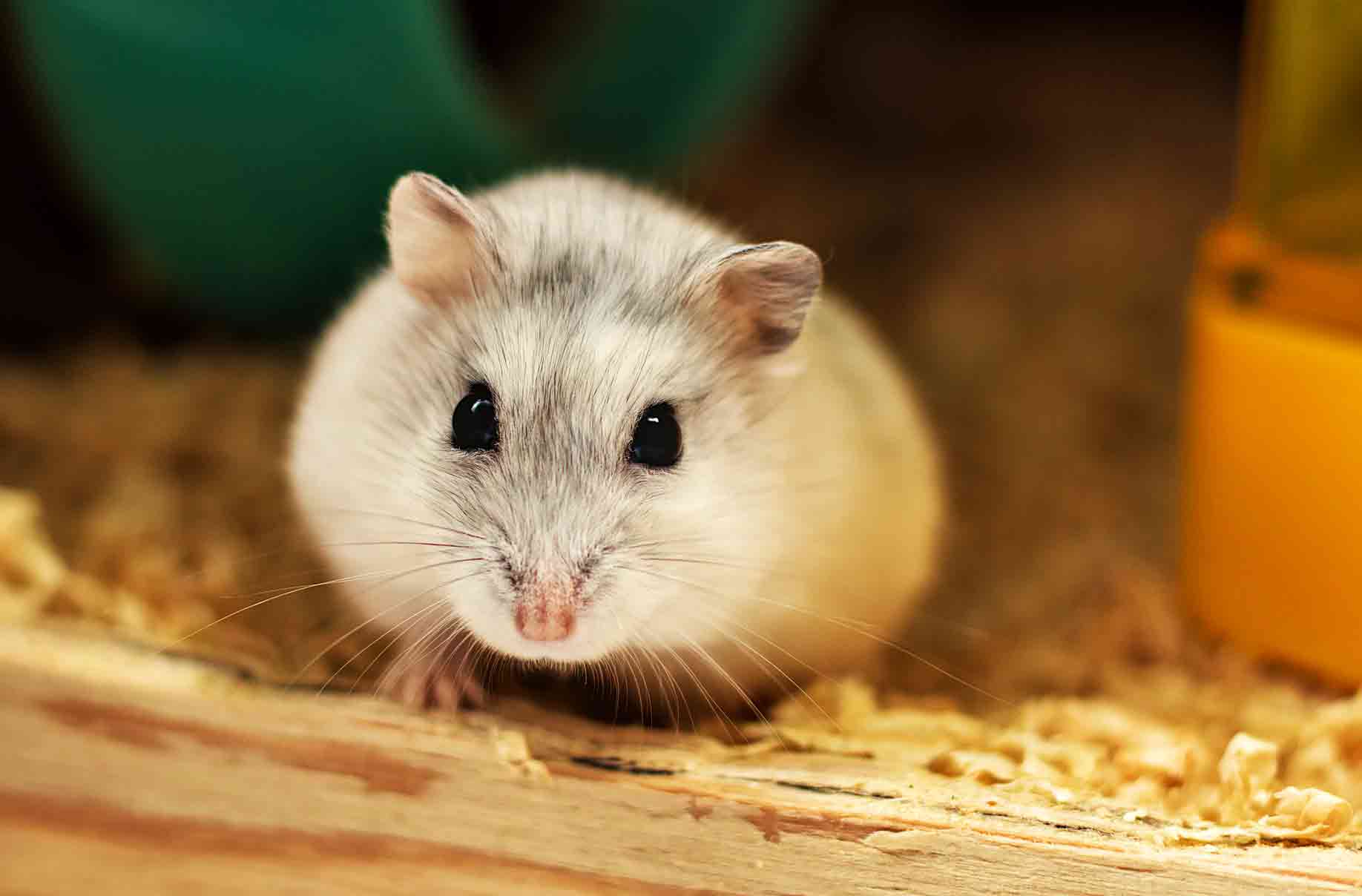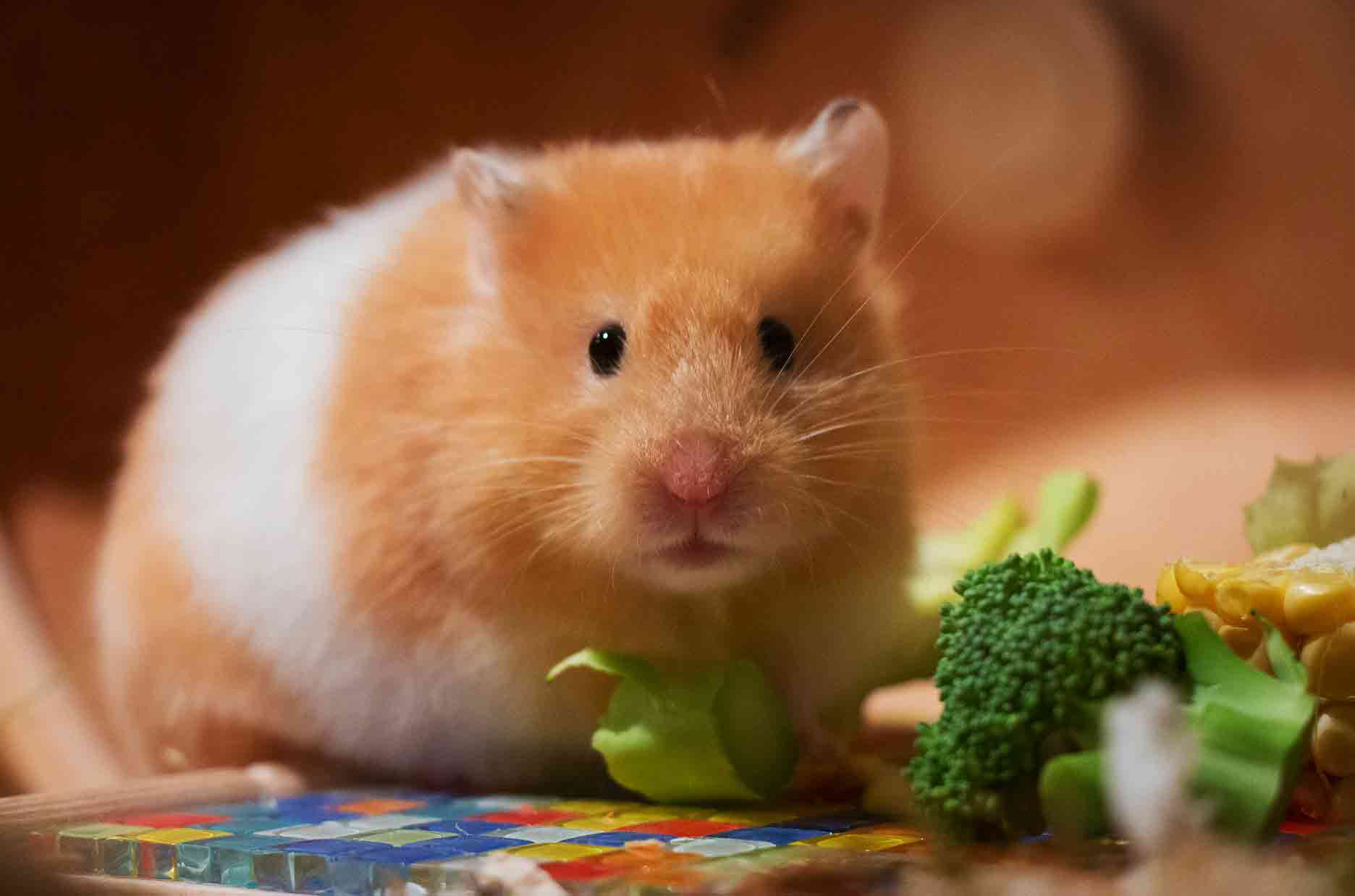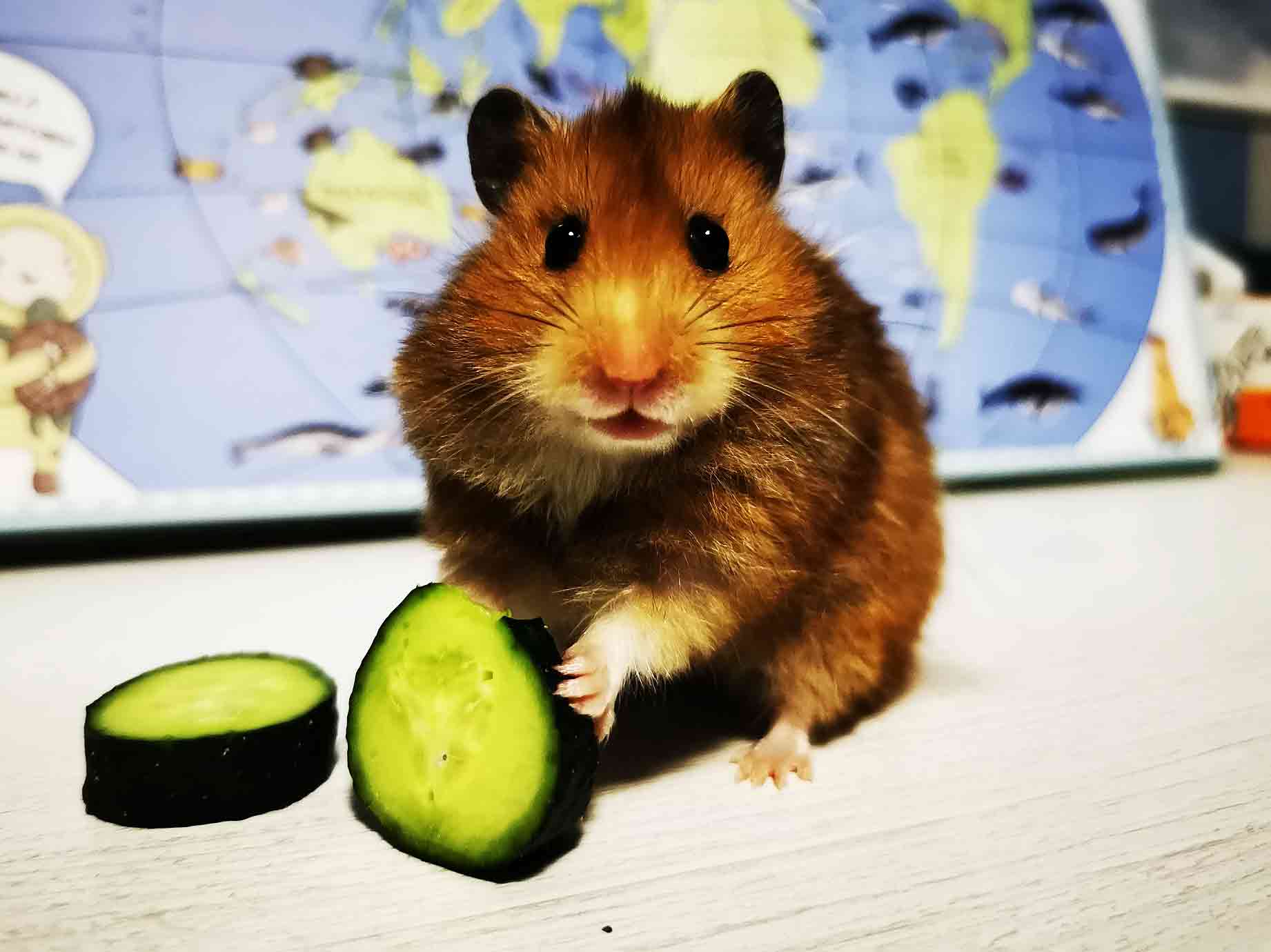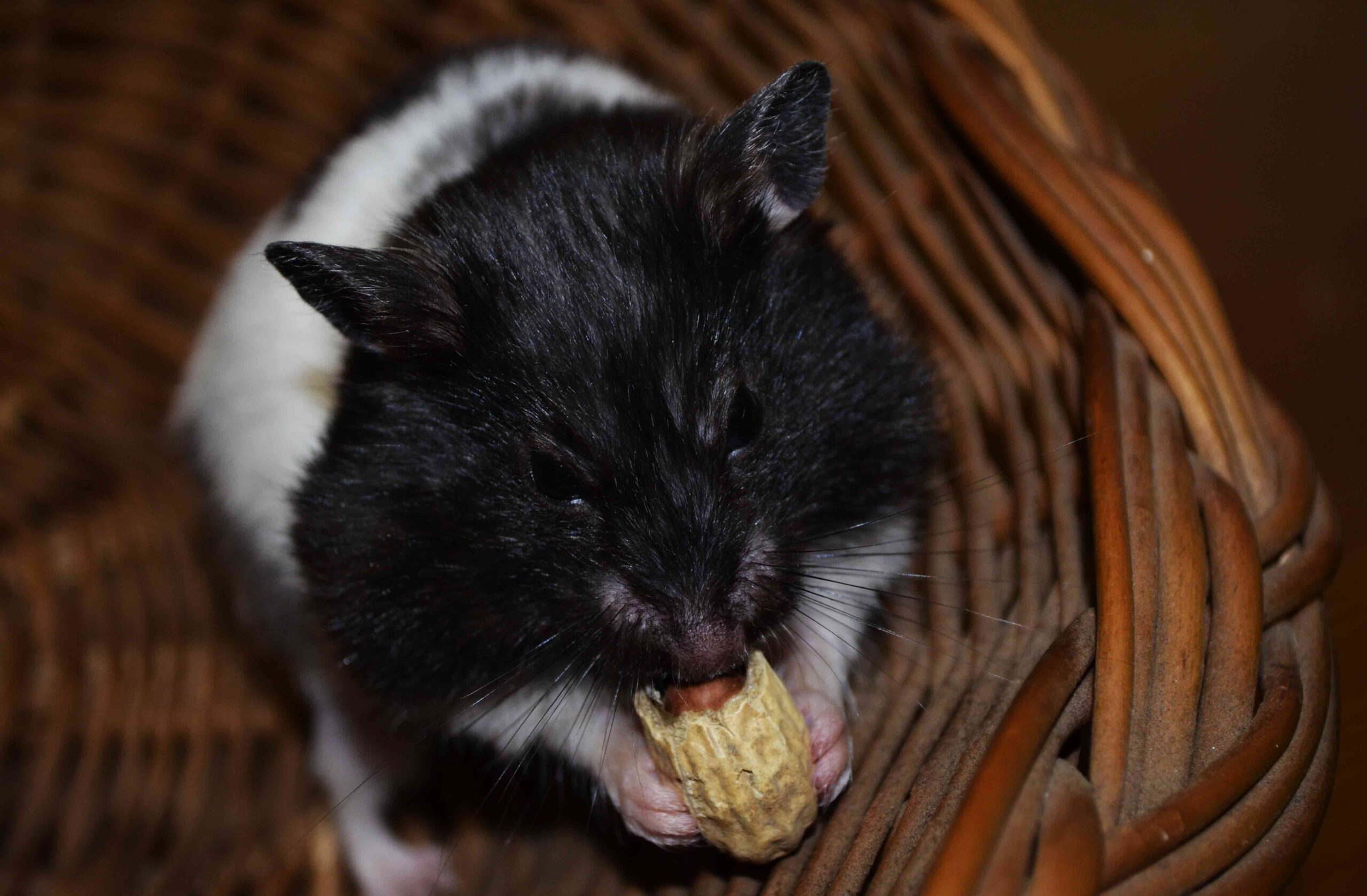
What can hamsters eat? You might think this would be an easy question to answer, but these small rodents are picky eaters with strict dietary needs that not all pet owners are aware of. Keep reading to learn more about hamster nutrition and what foods your hamster can and can’t eat.
A hamster can be an excellent companion for your child or yourself! However, the more you know about their unique dietary needs, the easier it will be to provide them with the best care possible. In this guide, we’ll take you through everything you need to know about hamster nutrition. First, we’ll go over some of the most common foods they eat and where to find them. Then, we’ll discuss what not to feed your hamster and why, including advice on whether or not they can eat chocolate!

1) What can hamsters eat?
What foods can hamsters eat? An unbalanced diet can result in obesity and gastrointestinal distress. Learn what your furry friend should — and shouldn’t — be eating with Petco’s list of hamster-friendly foods. Your pet will thank you for it!
2) What Shouldn’t be Fed to Your Hamster?
Just like people, not all foods are suitable for hamsters. While some foods are lovely to serve your pet from time to time, other types of food should never be fed to your furry friend.
There’s no need to worry about serving too many unhealthy items – make sure you know what hamster food is okay for your pet and what isn’t. Below is a list of food you should avoid giving your hamster. Keep in mind that if a particular food isn’t listed here, it doesn’t mean that it’s okay for your pet! It means that we didn’t think of listing it or ran out of room on our chart!
3) Fruits that are safe for your pet
Fruits are a great way to add nutrition to your hamster’s diet. Be sure to select fruits high in fiber, low in sugar, and free of any pesticides or chemicals. Apples, pears, bananas, peaches, plums, and oranges are all healthy additions for your furry friend.
The fruit’s natural sugars will help sweeten your hamster’s diet without adding too many extra calories. Keep a bowl of these fresh fruits on hand at all times for your hungry pet. Try mixing in some high-fiber grains such as oats or barley as well for added variety in your pet’s food dish.
4) Treats you should never give your pet
According to PetMD, there are certain foods that your pet should never have. Many of these items can be fatal to hamsters! These dangerous foods include apples, onions, nuts, citrus fruits (oranges), dried corn or sunflower seeds, raisins, and alcohol.
Some everyday household items you may not even realize should be kept away from your pet. If you suspect your hamster has ingested something that may harm it, contact a veterinarian immediately! You will also want to watch how much time they spend out of their cage when they come out for playtime.
5) Vegetables you should never feed your pet
The list of hamsters can eat a little shorter than you might think. This is especially true if you’re considering giving your pet a varied diet. Some fruits, vegetables, nuts, seeds, and herbs should be avoided because they can make your hamster ill or possibly even kill it.
Here’s a look at 10 everyday items to avoid feeding your hamster, along with suggestions for safer options. [For an extensive list of safe fruits, veggies, herbs, and nuts for food-motivated pets, check out What Do Rabbits Eat? A-List of Safe Fruits & Vegetables for Pet Rabbits.] No doubt about it—hamsters have a sweet tooth!

6) Grains That Are Safe For Your Pet
Yes, you can feed your hamster some nuts. They do make a good treat. However, they are very high in fat and can lead to obesity as a primary food source. Because of that, you should only give your hamster nuts sparingly now and then – maybe once or twice a week. It’s usually best to give your hamster in-shell peanuts rather than shelled ones because they’re easier for them to digest. If you buy shelled nuts, ensure they’re unsalted since salt is terrible for your little critter’s kidneys.
7) What about nuts? Can I feed my hamster those?
Hamsters love nuts, but that doesn’t mean you should give them any old nuts. Giving your hamster some types of nuts can make them sick.
While almonds, walnuts, cashews, pistachios, hazelnuts, and pecans are fine for hamsters to eat in moderation as a treat (no more than 10 per week), they can’t eat peanuts or macadamia nuts—or coconuts or any other foods with high levels of fat in them.
Pecans have been known to cause diarrhea in hamsters; otherwise, healthy hamsters have died after eating large amounts of macadamia nuts. Coconuts aren’t suitable for Syrian hamsters because they aren’t native to warm climates.
8) Fruits And Vegetables You Need To Monitor
Most fruits and vegetables are safe for hamsters to eat. However, it’s essential to ensure that your hamster does not overdo it. While some fruits like strawberries, apples, bananas, and watermelon can be eaten in moderation (1–2 times a week), other high-sugar fruits like grapes should be avoided as they could cause sugar spikes.
Similarly, while leafy greens are okay to feed your hamster occasionally, avoid giving them large amounts of kale or collard greens. These contain calcium oxalate crystals, which can cause blockages in their intestines.
9) Should you cook or steam vegetables before giving them to your hamster?
Cooking or steaming veggies before serving them to your hamster is a good idea because it helps break down cellulose. Cellulose isn’t harmful to hamsters, but it can make their digestive systems work harder than they need to, so cooking helps make food more accessible for them to digest.
When you cook or steam your veggies, be sure not to overdo it—if you boil too much water out of your veggies, then you’ll have steamed (not cooked) vegetables with very little nutritional value left. Additionally, if you don’t cook them enough, they might still have cellulose, which can also upset a hamster’s stomach.
10) Herbs That Are Safe For Your Pet
It’s easy to assume that herbs are entirely safe for your pet—after all, we think of these natural ingredients as perfectly suitable for human consumption. And while that’s largely true, certain herbs should be avoided when it comes to small pets. If you have a hamster at home, there are some which you should never feed them.
These can cause liver or kidney damage in your furry friend, and it could even lead to death if they consume enough of it.
11) What is toxic to hamsters?
When looking for what hamsters can eat, it’s essential to know what foods are toxic to hamsters. As with any animal, hamster diets should consist of various fruits, vegetables, grains, and other plant-based food sources. These foods should be high in fiber so your little furry friend doesn’t develop gastrointestinal issues later. While many human foods are considered safe for consumption by hamsters, others are unsafe.
Below is a list of common foods humans eat unsafe for pet dwarf or Syrian hamsters to consume. (Note: these items may also be dangerous for mice and other rodents.) To keep your little fur baby happy and healthy, here’s a list of what hamsters can eat.
12) Can hamsters eat meat?
Meat is a rich source of protein and other nutrients like vitamin B12, iron, zinc, phosphorus, and selenium. Because hamsters lack much ability to metabolize vitamin C, it’s essential to make sure they also have fruits in their diet; because they can develop deficiencies if they don’t. In addition to meat, there are plenty of human foods that you can feed your pet hamster—or rather shouldn’t feed your pet hamster.
13) Canned food
Avoid feeding your hamster to much-canned food. Canned food is not very good for them, and it often contains an excessive amount of fat, sugars, and sodium. When you feed your hamster canned food, make sure it’s plain and only give them about a teaspoon per day.
Avoid giving your hamster animal or dairy byproducts such as cheese, milk, yogurt, or meat; these ingredients are high in fat and cause heart disease. Instead of canned food with corn syrup added, try giving your hamster vegetables like carrots, squash, or broccoli. These vegetables have many vitamins and minerals that can help keep their body strong while growing up and staying active throughout their life span.

14) Dry food
While many owners feed their hamsters commercial hamster food pellets, it’s possible to create your homemade version of hamster food.
Try mixing cooked rice with various grains such as oats and barley. Add other foods such as seeds, nuts, or fruits and vegetables that don’t have much fiber. You can also offer your pet pieces of whole wheat bread or carrot slices, but avoid offering anything with sugar added in as too much sugar is bad for your hamster’s health.
Commercial treats are another way to add variety while offering something tasty—try dried fruits such as raisins or banana chips and popcorn! As always with treats and food, be careful not to overfeed your pet; portion control is critical once again.
15) Treats
It’s easy to underestimate how much of your hamster’s diet should be comprised of treats. However, if you want your furry friend to live a long, healthy life, you need to be smart about what kinds of treats you offer him. Fruit and vegetables are great options.
Just watch out for sugary or starchy fillers that may take away from their nutritional value. Also, consider how hard they might be on your hamster’s teeth; if they’re too hard, he could chip or lose his chompers!
16) Fresh fruits & vegetables
There are many fresh fruits and vegetables that hamsters can eat. Hamsters love carrots, broccoli, cabbage, oranges, bananas, and apples.
As humans, you must wash your fruits and vegetables before giving them to your hamster. Wash all produce in warm water or buy them pre-washed from supermarkets or farmers’ markets. If you do use tap water, make sure it has been filtered so you can avoid any contaminants getting into your hamsters’ food supply.
As with most things in life, when it comes to feeding your hamster, make sure to balance out their diet by alternating foods on different days, so they don’t get sick of eating one particular thing over and over again!
17) Introducing new foods
It’s always important to slowly introduce new foods into your hamster’s diet so you can monitor them for allergic reactions. Mix small amounts of the new food with their regular food and wait a day or two before adding more.
With young hamsters, it may take some time for them to figure out how much they like a particular food—you may need to offer it several times before they start eating it on their own.
For example, fresh veggies like carrots and celery can take several tries before your little furball decides he likes them. On that note, try not to worry if your hamster doesn’t seem interested in something right away—he needs time!
18) Water requirements
Water is crucial for hamsters. Unfortunately, there are no convenient watering holes in their native habitats, so they have evolved to rely on their owners for a reliable source of H2O. In captivity, hamsters need fresh water available at all times. In addition, it’s necessary to change and refill their drinking bottle each day and offer new food and bedding regularly.
Keep in mind that different types of hamsters may have slightly different dietary requirements, so it’s essential to keep up with them throughout their lives to ensure you’re providing optimum nutrition.

